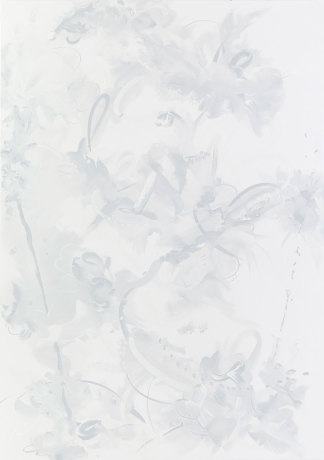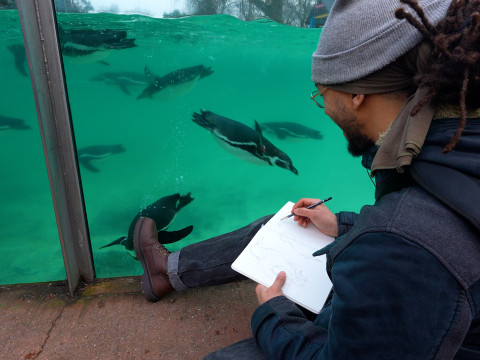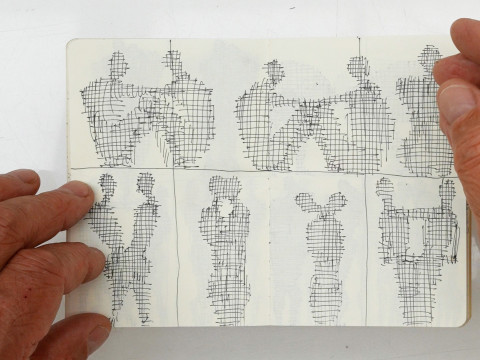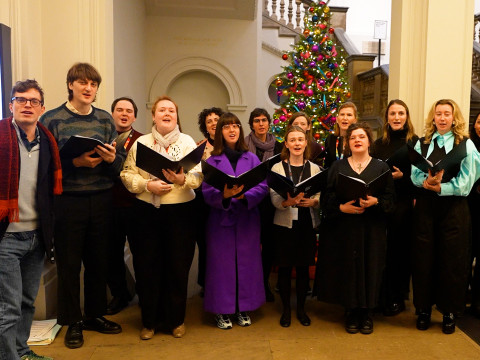
Fiona Rae RA: "I’ve always had an experimental approach to painting"
By Amy Macpherson
Published on 21 April 2015
The Royal Academician explains how turning away from colour has had an invigorating effect on her work.
How can an abstract painting suggest the figure? How can traditional media – oil paint and charcoal – be used in ways that are still alive, vital and relevant today? In her latest series of works, painter Fiona Rae RA has left behind her familiar working practices to explore ideas about the very nature of painting.
The Academician is perhaps best known for her brightly coloured canvases, in which a series of “paint accidents” - drips and washes - animate the surface, along with motifs inspired by sources as wide-ranging as cartoon characters and Dürer woodcuts.
But her new paintings at Timothy Taylor Gallery are executed entirely in greyscale, a self-imposed constraint that she discusses in our video below.
Fiona Rae RA at Timothy Taylor Gallery
"I’ve always had an experimental approach to painting..." Fiona Rae RA talks about her new series of paintings and charcoal drawings on show at Timothy Taylor Gallery.
“I guess one of the ideas I had in mind is that the paintings might suggest a figure, which is quite a big move for me,” Rae explains.
“I’m very interested in abstraction, and the possibilities within that field. I wanted to see how close I could come to suggesting an entity or a presence, or a figure of some kind within the canvas, without losing that sense of abstraction.”
Alongside the new paintings is a selection of drawings in charcoal. Rae reflects that drawing is something she hadn’t engaged with - “other than diagrammatic drawings; sketching out a structure” - since art school.
One of the inspirations for this return to drawing was, in fact, an act of erasure - Robert Rauschenberg’s Erased De Kooning Drawing (1953), an act of seemingly destructive iconoclasm that itself became an iconic moment in 20th century art history.
The story behind this moment, and the resulting artwork – in which only faint traces of De Kooning’s original lines remain – are a source of fascination for Rae.
“I think what’s interesting is that De Kooning allowed Rauschenberg to do it. He had the generosity to allow him to come in and trample all over his expressive drawing.
“There’s something about the ambition of those two artists that comes together in that piece. De Kooning’s incredible freedom and plasticity with using paint or charcoal to express a figure, and Rauschenberg as the new generation that came along and had the temerity to erase it… as a kind of tabula rasa, ‘we’re going to start again from here’ moment, which was followed by Pop Art and assemblage and so forth.
“De Kooning and Rauschenberg are very present for me as artists, and I wanted to see what I could do with that idea, whether I could both produce something and erase it at the same time - and yet be left with something."

Figure 1p, 2015

Figure 1o, 2015

Figure 1m, 2014

Figure 1h, 2014
Another influence was the 13th century Chinese handscroll painting Nine Dragons, by Chen Rong, which Rae saw in the V&A exhibition Masterpieces of Chinese Painting 700-1900.
“What really struck me was how, using black ink on white paper and a tiny bit of red here and there, Chen Rong was able to suggest dragons appearing and disappearing from the fabric of the scroll. It seemed very contemporary to me, the idea of stuff coming up out of nothing, in the way that in Photoshop, for example, you can manipulate a gradient range so that elements can rise up or sink away in the image.”
Fiona Rae is at Timothy Taylor Gallery until 30 May 2015.
Related articles

Video: drawing penguins at London Zoo
3 February 2025

My sketchbook: sculpture drawings by Antony Gormley RA
13 January 2025

Video: Merry Christmas from the Burlington House choir
18 December 2024